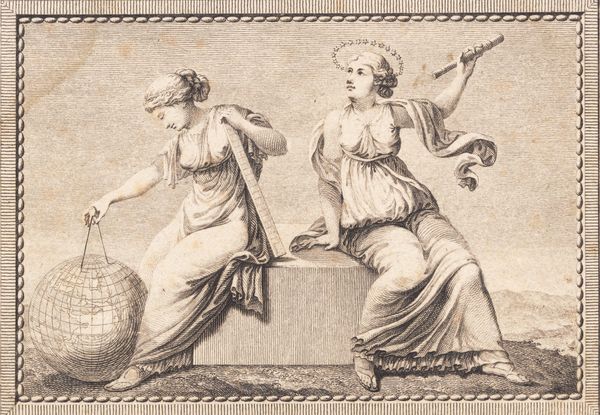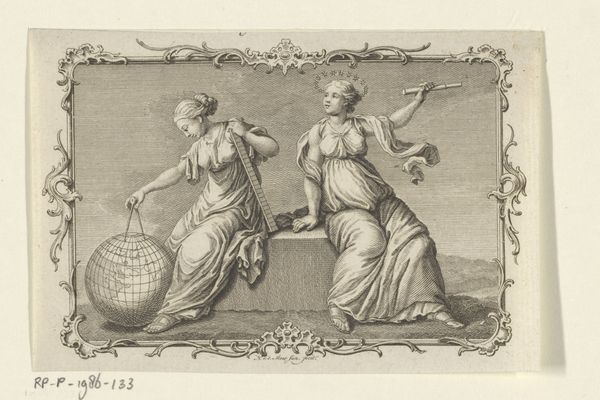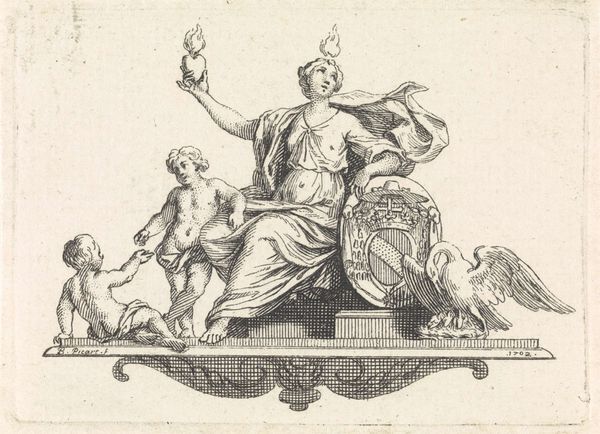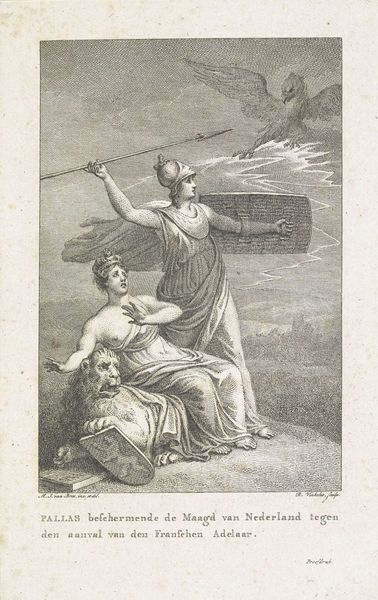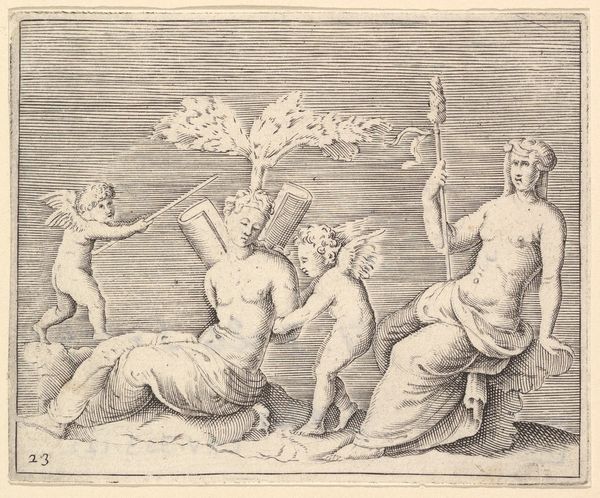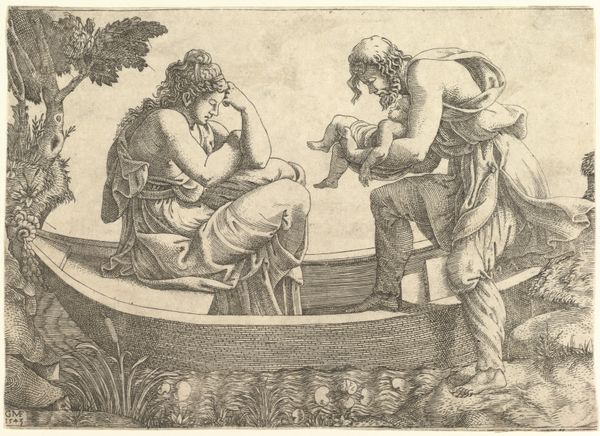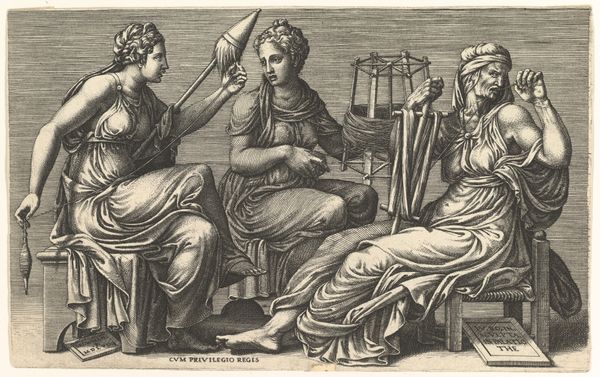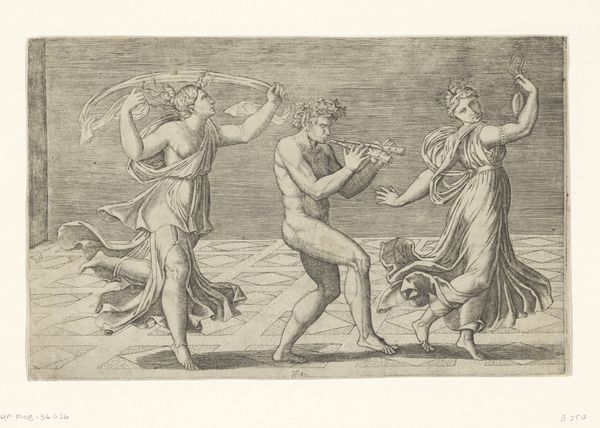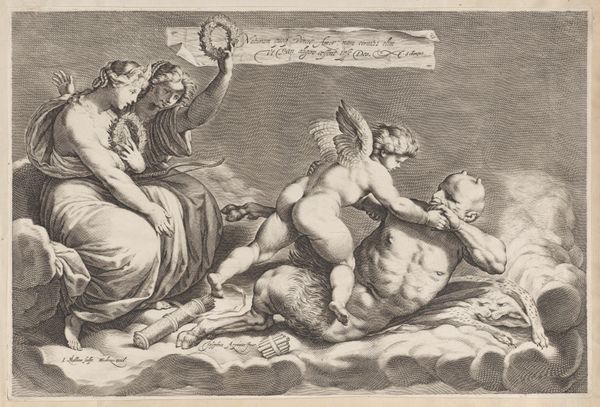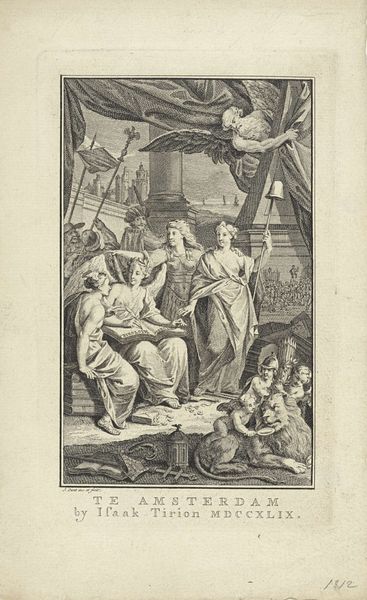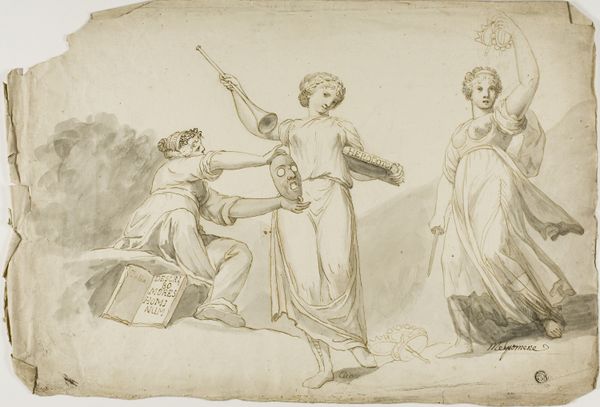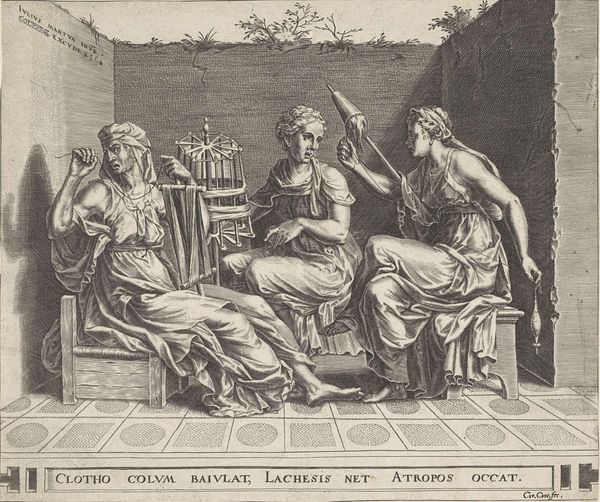
print, engraving
#
neoclacissism
# print
#
old engraving style
#
figuration
#
line
#
history-painting
#
engraving
Dimensions: 83 mm (height) x 119 mm (width) (billedmaal)
J.F. Clemens created this engraving, "Urania og Gæa sidder på en firkantet stenblok," likely in the late 18th or early 19th century. The artwork presents the muses Urania, representing astronomy, and Gæa, the personification of the Earth, seated together. Classical allegories like this were popular during the Enlightenment. They reflect a renewed interest in science and reason. Urania, often depicted with celestial globes, embodies the era's fascination with understanding the cosmos. Gæa, the earth mother, underscores the value placed on nature and earthly knowledge. But I wonder, what does it mean to see these figures, knowledge personified, as women? The choice to portray these intellectual concepts through female figures is interesting when we consider the limited opportunities for women in intellectual fields during this time. Is this an affirmation, or another form of cultural gatekeeping? While celebrating knowledge, we might also reflect on who has access to it, and whose contributions are recognized.
Comments
No comments
Be the first to comment and join the conversation on the ultimate creative platform.
